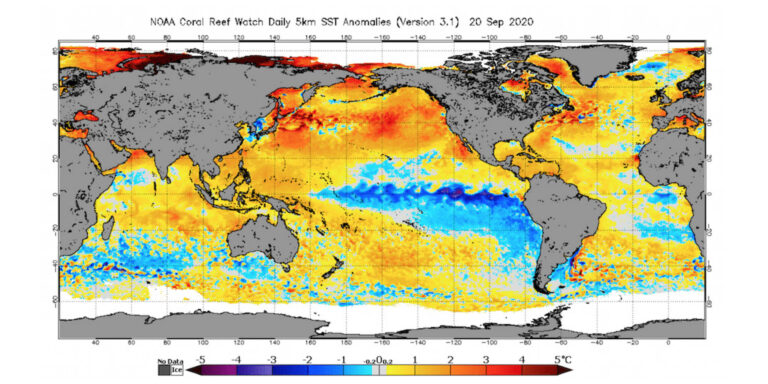According to research led by the National Center for Atmospheric Research (NCAR), the Australian bushfires in 2019-2020 contributed to ocean cooling thousands of miles away, ultimately nudging the Tropical Pacific into a rare multi-year La Niña event that dissipated only recently.
La Niña events tend to affect the winter climate over North America, causing drier and warmer than average conditions in the southwest USA, wetter weather in the Pacific Northwest, and colder temperatures in Canada and the northern USA. Because the emergence of La Niña can often be predicted months in advance, it’s an important phenomenon for seasonal climate forecasts.
John Fasullo, NCAR scientist and lead author of the study, said, “Many people quickly forgot about the Australian fires, especially as the Covid-19 pandemic exploded, but the Earth system has a long memory, and the impacts of the fires lingered for years.”
The organization asserted that La Niñas are not uncommon, but an occurrence for three consecutive winters is rare. The recent run of La Niñas, beginning in the winter of 2020-21 and continuing through last winter, is only the third string of three in the historical record, which dates back to 1950. The recent La Niña streak is also unusual because it is the only one that did not follow a strong El Niño – a warming instead of cooling in the Tropical Pacific with similar but opposite climate impacts.
Scientists have previously established that events in the Earth system, including large volcanic eruptions in the Southern Hemisphere, can shift the odds toward a La Niña emerging. In the case of a volcano, emissions spewed high into the atmosphere can result in the formation of light-reflecting particles called aerosols, which can cool the climate and ultimately create favorable conditions for La Niña. Given the massive scale of the Australian fires – which burned an estimated 46 million acres – Fasullo and his co-authors wondered what climate impacts the resulting emissions might have had.
To investigate the question, the researchers used an advanced NCAR-based computer model called the Community Earth System Model, version 2, to run two batches of simulations on the Cheyenne system at the NCAR-Wyoming Supercomputing Center. All the simulations started in August of 2019, before the blazes in Australia became historically large, but only one set incorporated the emissions from the wildfires as observed by satellite. The other used average wildfire emissions, the normal practice when running long-term climate model simulations.
The research team found that the emissions from the wildfires, which quickly encircled the Southern Hemisphere, kicked off a chain of climate interactions. Unlike a volcanic eruption, the bulk of wildfire emissions did not make it high enough in the atmosphere to cool the climate by directly reflecting sunlight. Instead, the aerosols that formed from the emissions brightened the cloud decks across the Southern Hemisphere, especially off the coast of Peru, which cooled and dried the air in the region, ultimately shifting the zone where the northern and southern trade winds come together. The net result was a cooling of the Tropical Pacific Ocean, where La Niñas form, over multiple years.
“It’s a Rube Goldberg of climate interactions that we were only able to identify because our model now represents specific details in the evolution of smoke and cloud-aerosol interactions, a recent improvement to its capabilities,” Fasullo said.
In June 2020 – just a few months before the first of the three La Niñas formed – some seasonal forecasts were still predicting “neutral” conditions in the Tropical Pacific, meaning that neither a La Niña nor El Niño was favored. Instead, a strong three-year La Niña materialized.
Fasullo said the new research helps explain this missed forecast and highlights the importance of using a coupled Earth system model, which includes the atmosphere and the ocean, as a forecasting tool.
The research also underscores the importance of having realistic wildfire emissions, both in seasonal climate predictions and long-range climate projections. Currently, biomass burning emissions in most climate model simulations are prescribed, meaning they are imposed on the model run and not determined by interactions happening within the model. For example, a simulated hot and dry period in the model simulation would not lead to more wildfires, and therefore more emissions within the simulation.
“As the climate changes, the emissions from wildfires will also change,” Fasullo said. “But we don’t have that feedback in the model. It is the goal of our current work to incorporate these effects as realistically as possible.”



